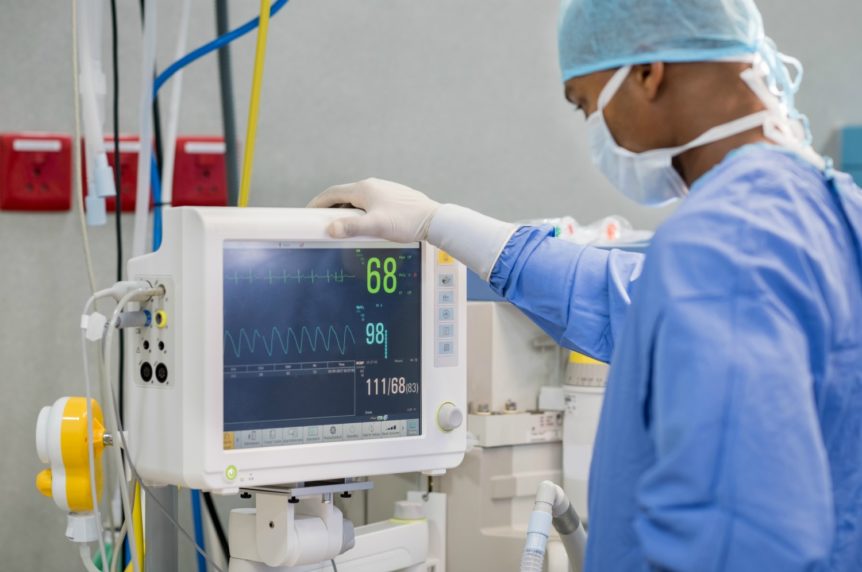Find medical silicone rubber molding and learn about silicone rubber mold materials. The Rubber Group makes custom molded rubber products and provides medical injection molding, medical compression molding, and medical transfer molding services.
Many medical molding applications use silicones, a family of synthetic elastomers with an attractive balance of properties. For example, silicones offer high-temperature resistance, electrical insulation, and resistance to water, ozone, some chemicals, and ultraviolet light. They can also combine biocompatibility for patient contact with thermal stability for repeated medical device sterilization. Many different types of silicones are available, but they’re not all suitable for your medical molding application. By partnering with The Rubber Group and learning what to consider, you can succeed with silicone selection.
FDA and USP-Class VI Silicones
To minimize risks and control costs, product designers and engineers must determine whether their medical molding application requires an FDA approved silicone. These materials typically cost more and are considered to be food-grade. FDA approved silicones fall under 21 CFR177.26000 of the U.S. Federal Code; however, the Food and Drug Administration (FDA) does not directly approve these materials. Rather, a silicone is FDA approved if it contains only 21 CFR177.26000 listed ingredients. The silicone’s supplier is responsible for testing the material and ingredients, such as pigments.
Medical silicones that meet the requirements of USP Class VI, a designation from the U.S. Pharmacopeia, may also be required for biocompatibility. USP VI is a panel of tests that are used to determine the biological reactivity of the silicone in vivo. There are other USP classes as well, but USP Class VI is the strictest. Typically, the customer communicates the regulatory requirements so that The Rubber Group can select the right silicone for the medical molding application. For example, we can help you to determine whether you need an ISO 10993 vs. USP Class VI silicone.
RoHS and REACH
Companies that do business in Europe may need silicones that meet Restriction of Hazardous Substances (RoHS) and comply with the European Regulation on Registration, Evaluation, Authorisation and Restriction of Chemicals (REACH). Companies outside the European Union (EU) aren’t bound by REACH, but some U.S. buyers now want a REACH compliance document regardless. By partnering with a rubber molder with a strong supply chain, you can also contain obtain documentation such as certificates of assurance (COAs) or certificates of compliance (COCs).
Peroxide vs. Platinum Curing for Silicone Mold Materials
Silicones can use peroxide or platinum for the catalyst as they cure from a gum to a solid. The peroxide or free radical system is the oldest cross-linking chemistry for silicone rubber, but it may release unwanted byproducts, such as volatile organic acids (VOAs), without post-curing. Yet in most cases, a peroxide-cured silicone will pass the USP Class VI panel of tests. In fact, many of the tested materials that The Rubber Group uses are peroxide-cured and tested without a post-cure.
Platinum-cured silicones have lower levels of extractables, chemical compounds that can migrate under conditions such as elevated temperature or surface exposure. These silicones are more expensive but may be required for some applications. For example, if your medical molding application requires high cleanliness and purity, you may need a platinum-cured silicone.
Durometers, Colors, and Product Specifications
Medical silicones are available in different durometers, or levels of hardness, as measured on the Shore A scale. These durometers range from 10 (soft) to 90 (hard). Softer silicones provide greater cushioning and harder silicones provide greater impact resistance. Silicones can be matched to just about any color, so buyers can also select medical silicones in colors that match larger product designs, such as wearable medical devices. Tensile strength, elongation percentage, and other material specifications also drive product selection.
Production Compatibility
Medical molding and silicone selection is also a function of the molding process itself. Injection, transfer, and compression molding are commonly used processes for silicone products such as surgical handles, sterilization tray mats, peristaltic pump tubing, umbrella valves, diaphragms, medical seals, and medical grommets. At the component level, most medical molding does not require a clean room.
Because it’s a broad discipline, medical molding can also be used to produce EMI gaskets that resist electromagnetic interference (EMI) in medical electronics, and to produce rubber-to-metal or rubber-to-plastic bonded assemblies for durable medical equipment.
Medical Silicone Rubber Molding
In addition to silicone selection, the success of your next medical molding project depends on choosing the right partner. For custom molded medical products that are backed by application experience and technical expertise, contact The Rubber Group.

